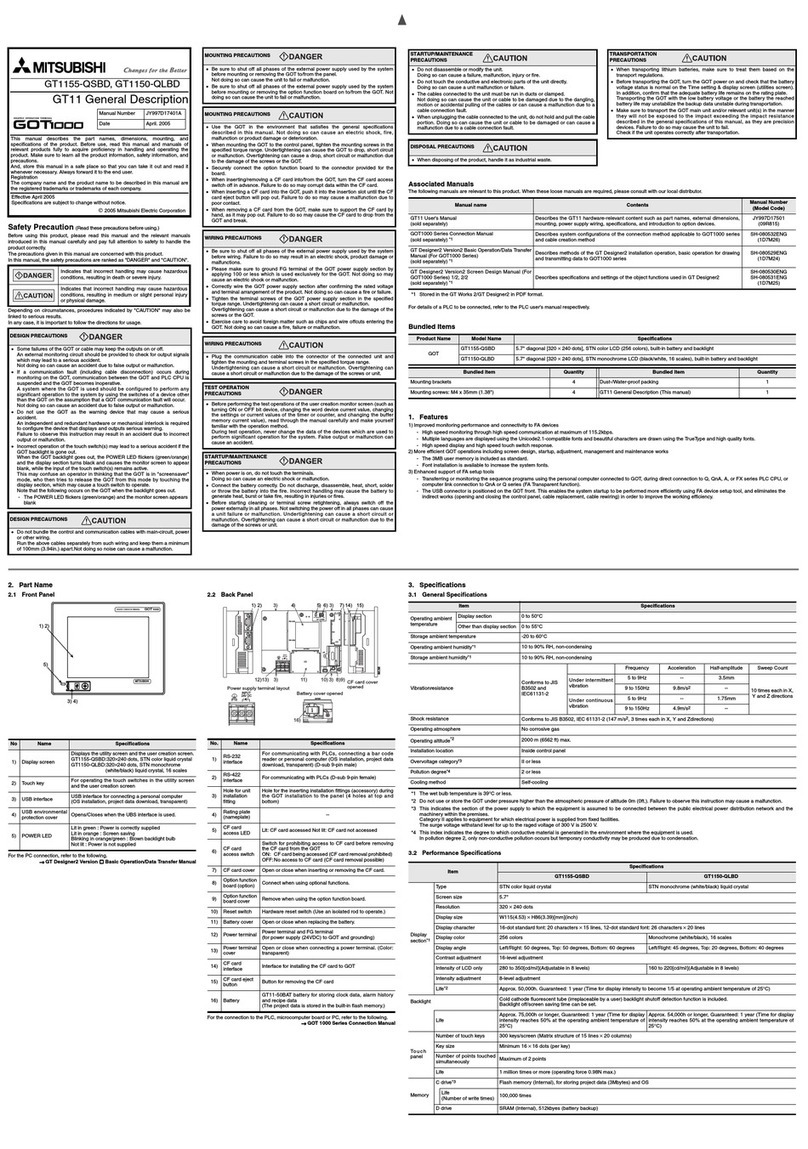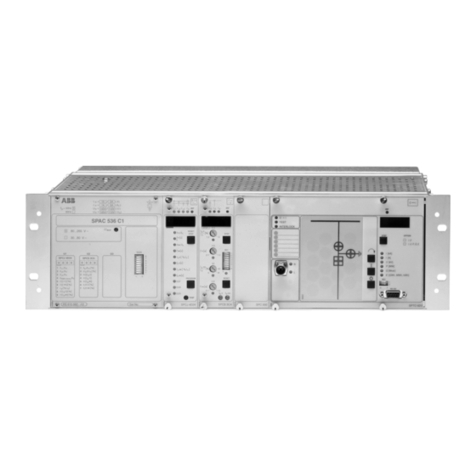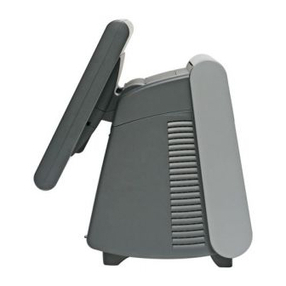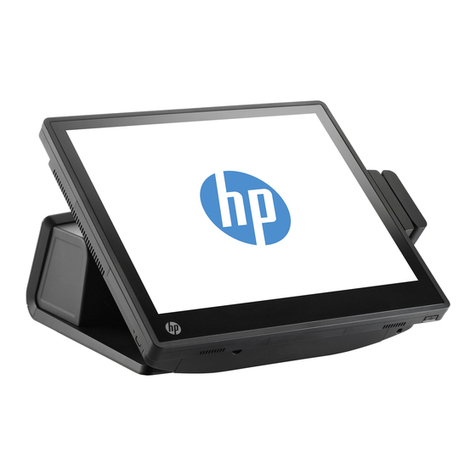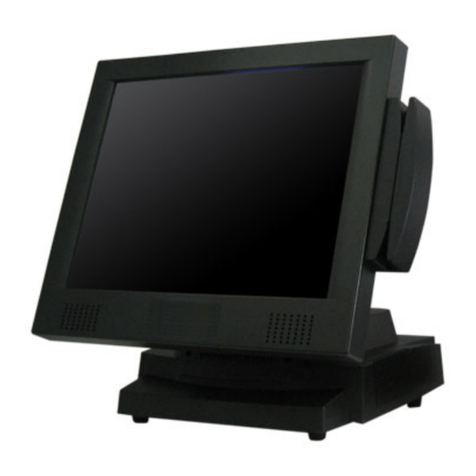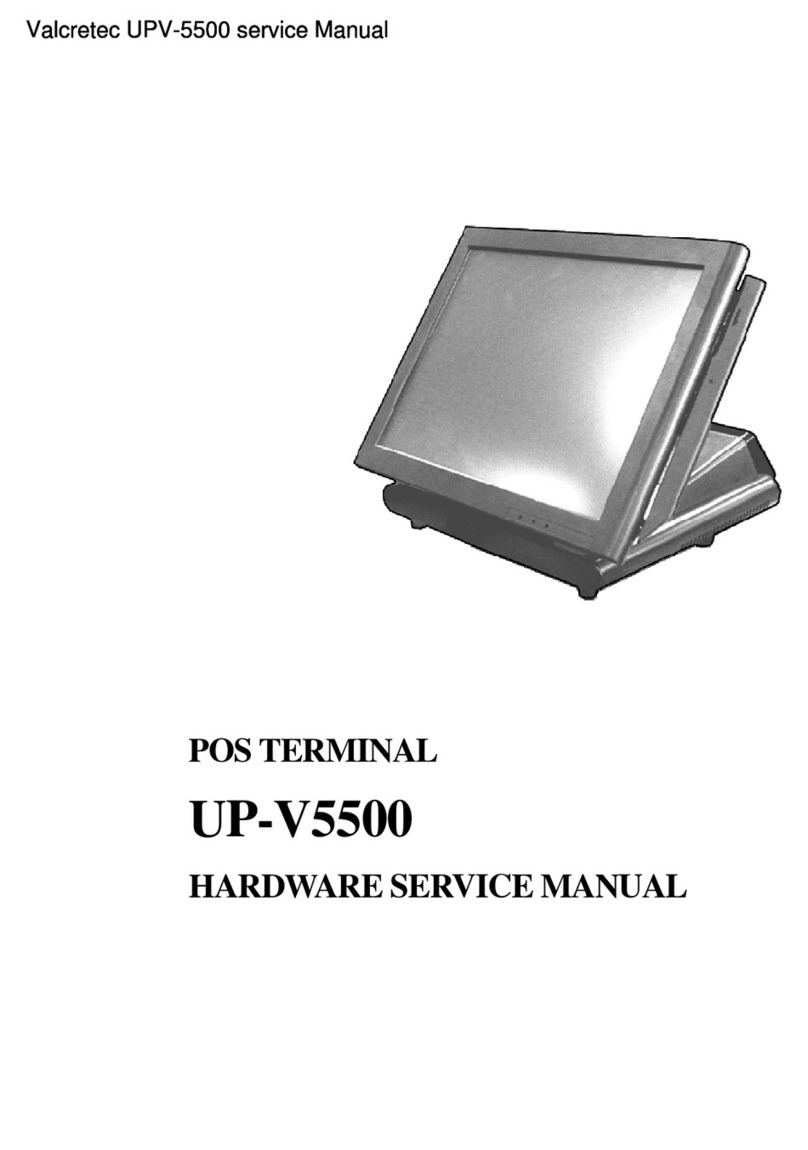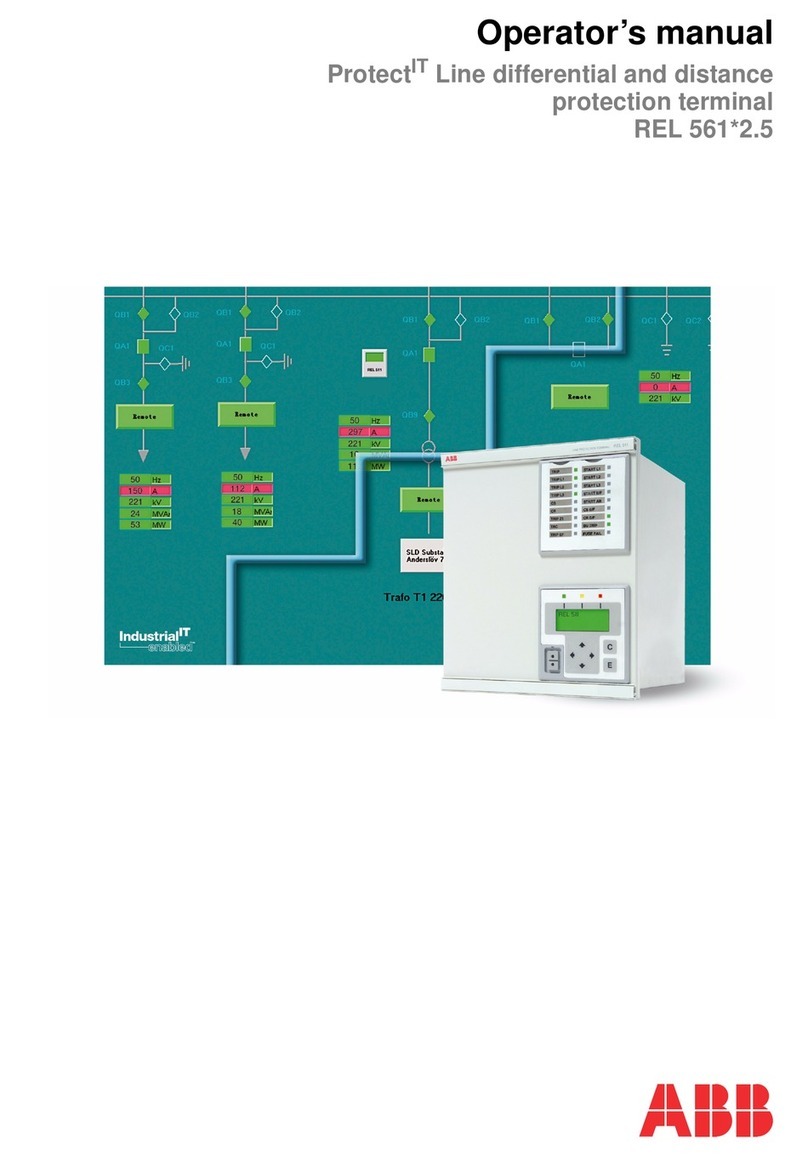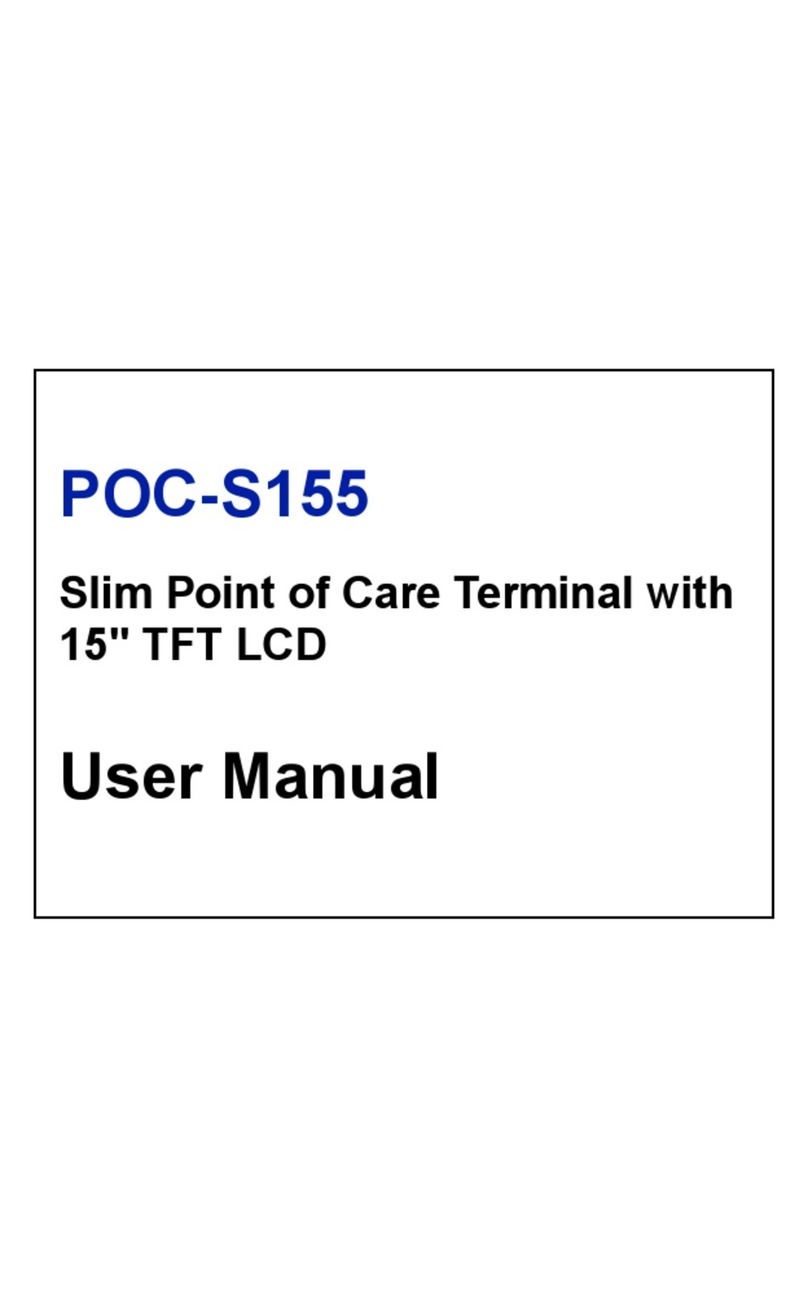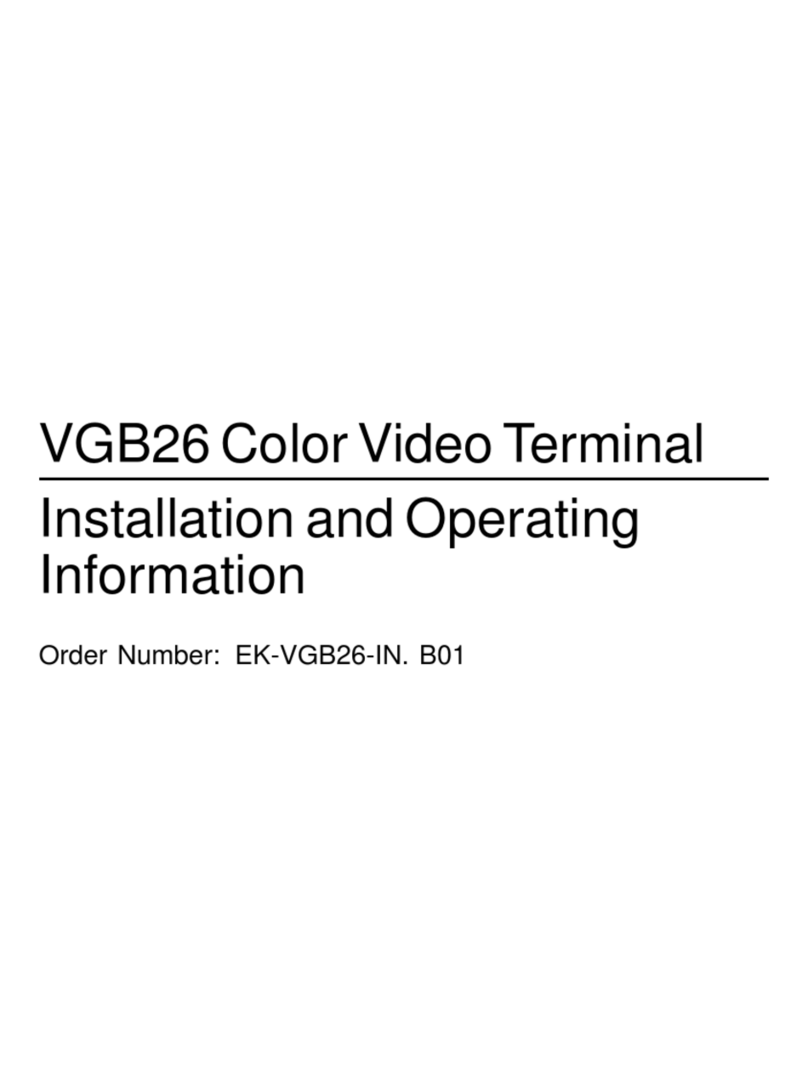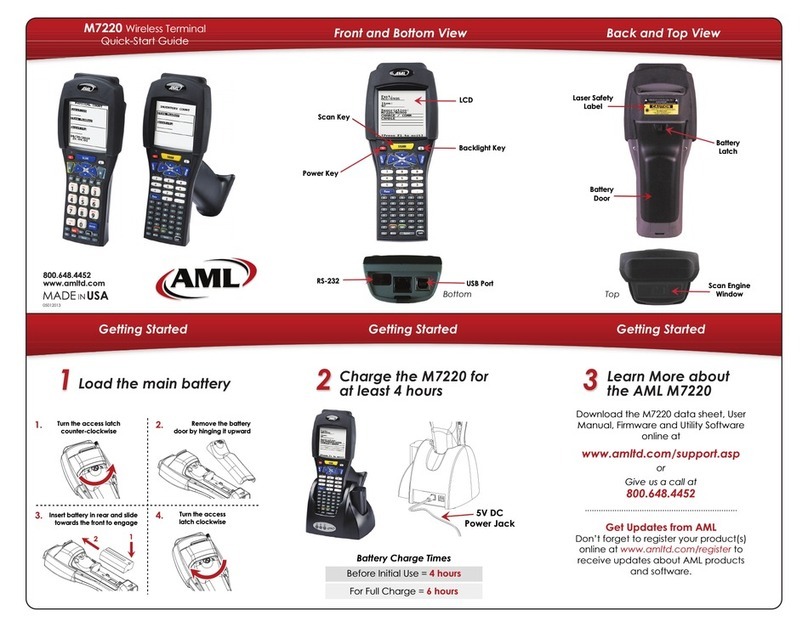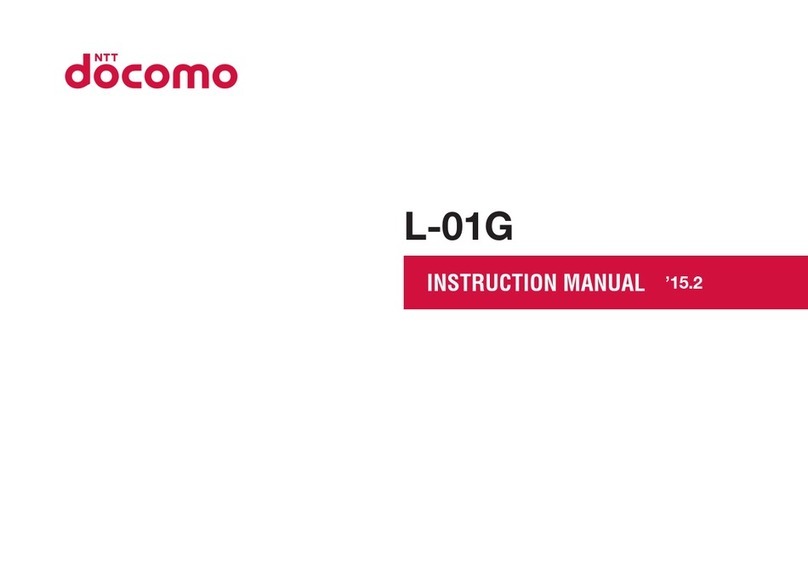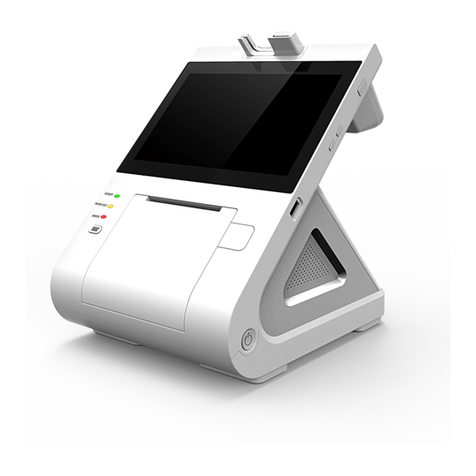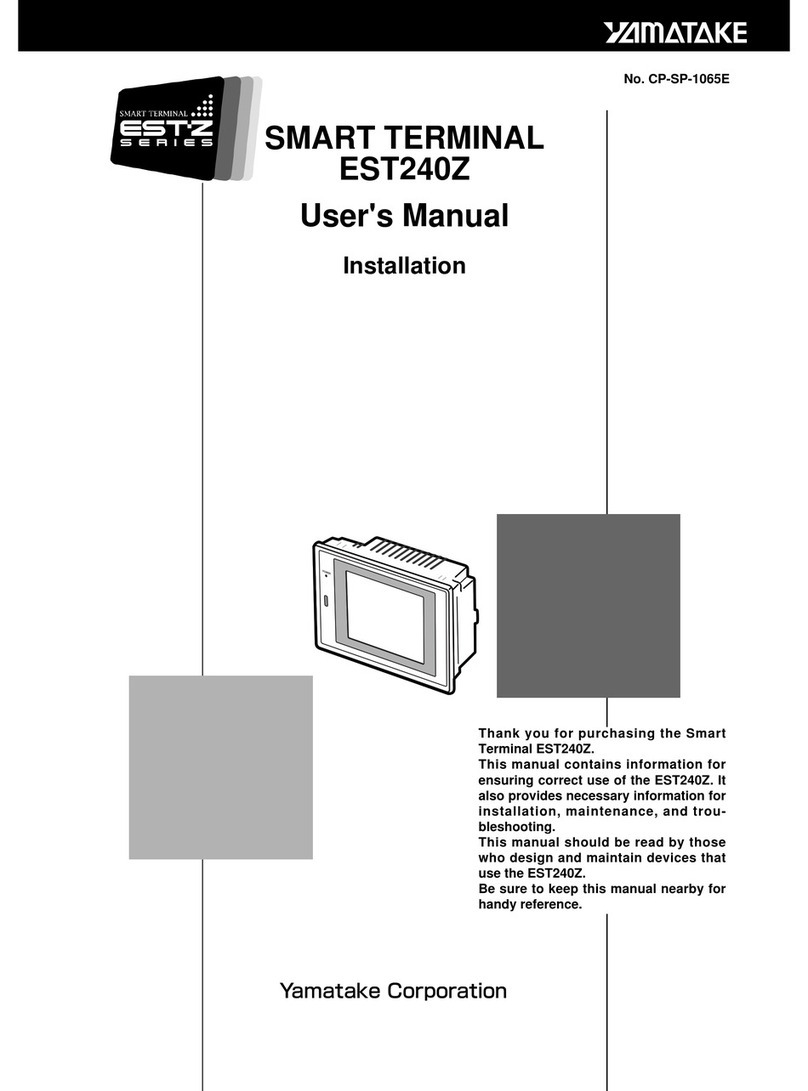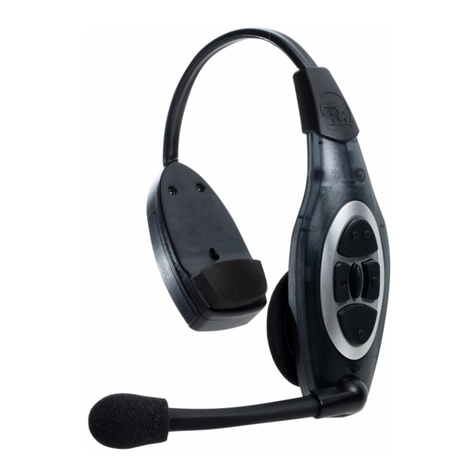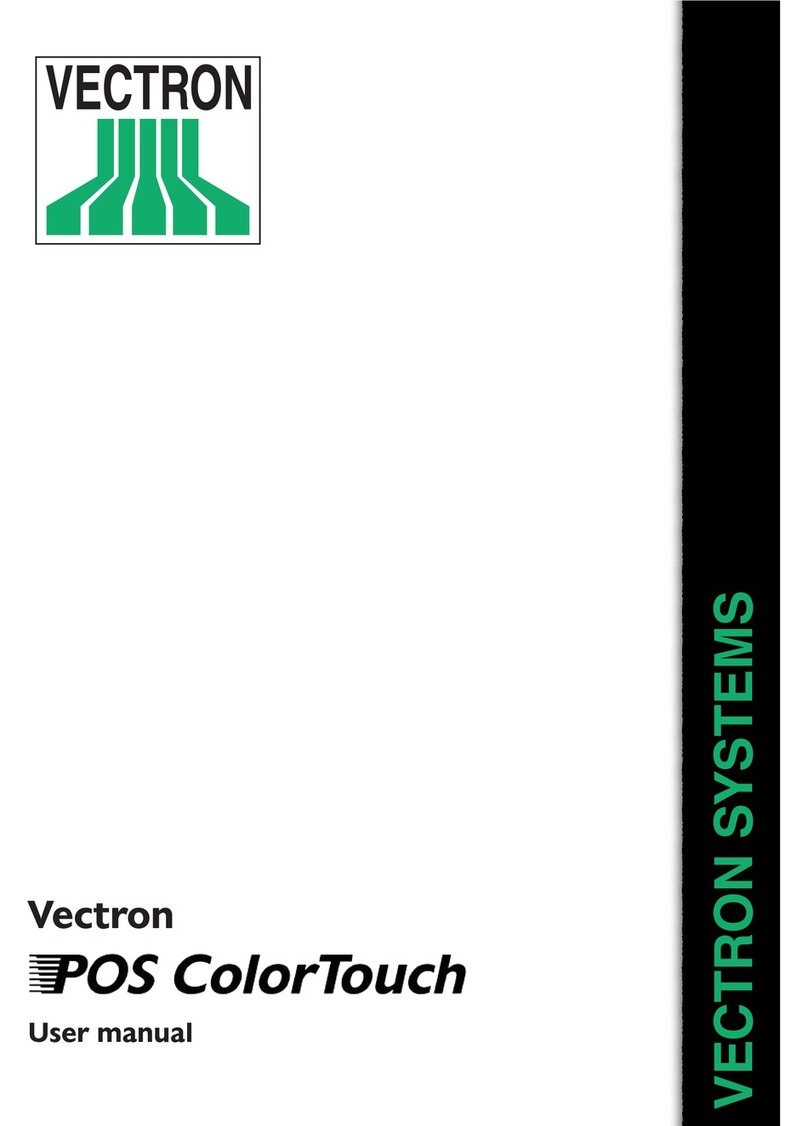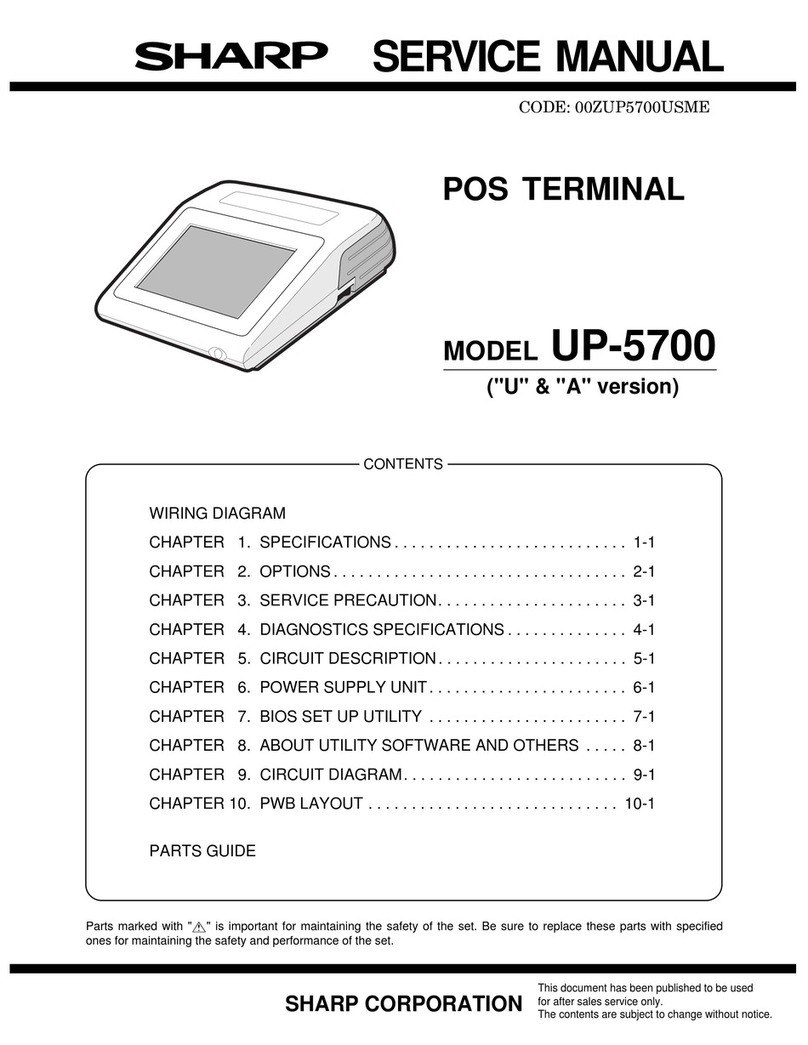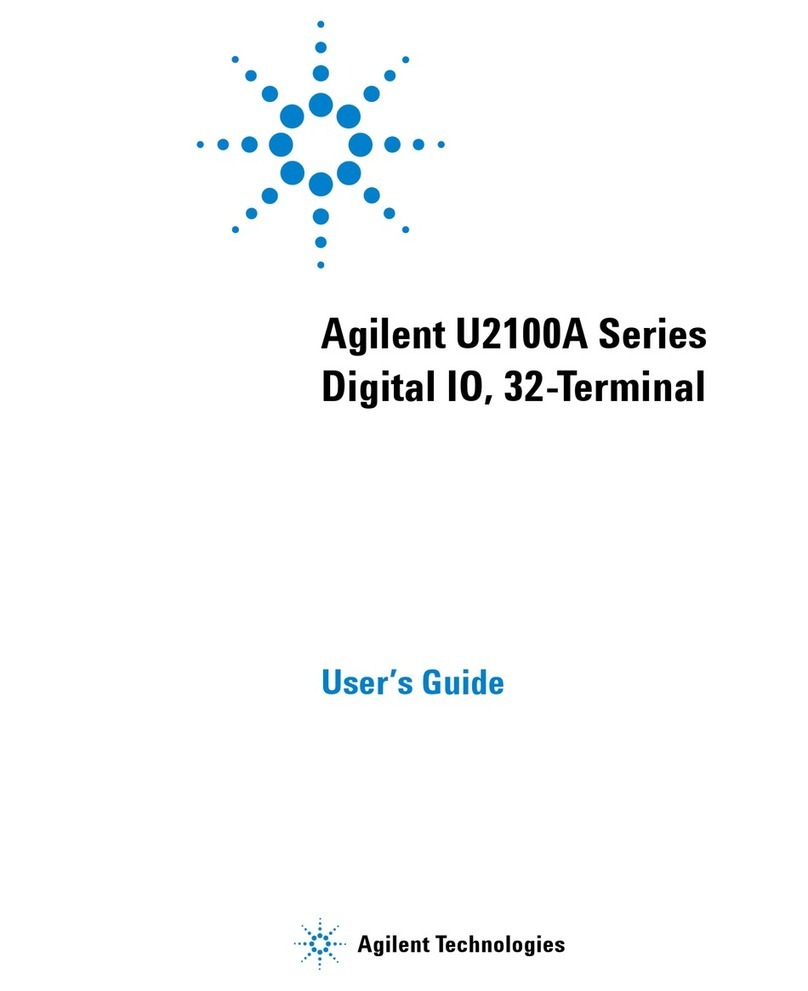Terasic ALTERA VEEK-MT User manual

1

CONTENTS
CHAPTER 1
INTRODUCTION OF THE VEEK-MT..............................................................................
1
1.1 About the Kit ..............................................................................................................................................5
1.2 Setup License for Terasic Multi-touch IP...................................................................................................6
1.3 Getting Help...............................................................................................................................................7
CHAPTER 2
ARCHITECTURE ..........................................................................................................
8
2.1 Layout and Components.............................................................................................................................8
2.2 Block Diagram of the VEEK-MT-MT........................................................................................................9
CHAPTER 3
USING VEEK-MT
............................................................................................................10
3.1 Configuring the Cyclone IV E FPGA.......................................................................................................10
3.2 Bus Controller ..........................................................................................................................................13
3.3 Using the 7” LCD Capacitive Touch Screen............................................................................................14
3.4 Using 5-megapixel Digital Image Sensor.................................................................................................16
3.5 Using the Digital Accelerometer..............................................................................................................17
3.6 Using the Ambient Light Sensor ..............................................................................................................17
3.7 Using Terasic Multi-touch IP ...................................................................................................................18
CHAPTER 4
VEEK-MT DEMONSTRATIONS
.................................................................................20
4.1 System Requirements...............................................................................................................................20
4.2 Factory Configuration ..............................................................................................................................20
4.3 Painter Demonstration..............................................................................................................................21
4.4 Picture Viewer ..........................................................................................................................................25
4.5 Video and Image Processing.....................................................................................................................27
4.6 Camera Application..................................................................................................................................30
4.7 Video and Image Processing for Camera..................................................................................................33
4.8 Digital Accelerometer Demonstration......................................................................................................36
CHAPTER 5
APPLICATION SELECTOR
............................................................................................39
5.1 Ready to Run SD Card Demos.................................................................................................................39
5.2 Running the Application Selector.............................................................................................................40
1

2
5.3 Application Selector Details.....................................................................................................................40
5.4 Restoring the Factory Image ....................................................................................................................42
CHAPTER 6
APPENDIX
....................................................................................................................45
6.1 Revision History.......................................................................................................................................45
6.2 Copyright Statement.................................................................................................................................45

Chapter 1
Introduction
The Video and Embedded Evaluation Kit - Multi-touch (VEEK-MT) is a comprehensive design
environment with everything embedded developers need to create processing-based systems.
VEEK-MT delivers an integrated platform that includes hardware, design tools, intellectual
property (IP) and reference designs for developing embedded software and hardware platform in a
wide range of applications. The fully integrated kit allows developers to rapidly customize their
processor and IP to best suit their specific application. The VEEK-MT features the DE2-115
development board targeting the Cyclone IV E FPGA, as well as a capacitive LCD multimedia
color touch panel which natively supports multi-touch gestures. A5-megapixel digital image sensor,
ambient light sensor, and 3-axis accelerometer make up the rich feature-set.
The VEEK-MT is preconfigured with an FPGA hardware reference design including several
ready-to-run demonstration applications stored on the provided SD card. Software developers can
use these reference designs as their platform to quickly architect, develop and build complex
embedded systems. By simply scrolling through the demos of your choice on the LCD touch panel,
you can evaluate numerous processor system designs.
The all-in-one embedded solution offered on the VEEK-MT, in combination of the LCD touch
panel and digital image module, provides embedded developers the ideal platform for multimedia
applications with unparalleled processing performance. Developers can benefit from the use of
FPGA-based embedded processing system such as mitigating design risk and obsolescence, design
reuse, reducing bill of material (BOM) costs by integrating powerful graphics engines within the
FPGA, and lower cost.
Figure 1-1 shows a photograph of VEEK-MT.
1

Figure 1-1 Video and Embedded Development Kit – Multi-touch
The key features of the board are listed below:
DE2-115 Development Board
•Cyclone IV EP4CE115 FPGA
o114,480 LEs
o432 M9K memory blocks
o3,888 Kb embedded memory
o4 PLLs
•Configuration
oOn-board USB-Blaster circuitry
oJTAG and AS mode configuration supported
oEPCS64 serial configuration device
•Memory Devices
o128MB SDRAM
o2MB SRAM
o8MB Flash with 8-bit mode
o32Kb EEPROM
•Switches and Indicators
o18 switches and 4 push-buttons
o18 red and 9 green LEDs
oEight 7-segment displays
•Audio
o24-bit encoder/decoder (CODEC)
o3.5mm line-in, line-out, and microphone-in jacks
2

3
•Character Display
o16x2 LCD module
•On-board Clocking Circuitry
oThree 50MHz oscillator clock inputs
oSMA connectors (external clock input/output)
•SD Card Socket
oProvides SPI and 4-bit SD mode for SD Card access
•Two Gigabit Ethernet Ports
oIntegrated 10/100/1000 Ethernet
•High Speed Mezzanine Card (HSMC)
oConfigurable I/O standards (voltage levels: 3.3/2.5/1.8/1.5V)
•USB Type A and B
oProvides host and device controller compliant with USB 2.0
oSupports data transfer at full-speed and low-speed
oPC driver available
•40-pin Expansion Port
oConfigurable I/O standards (voltage levels: 3.3/2.5/1.8/1.5V)
•VGA-out Connector
oVGA DAC (high speed triple DACs)
•DB9 Serial Connector
oRS232 port with flow control
•PS/2 Connector
oPS/2 connector for connecting a PS2 mouse or keyboard
•TV-in Connector
oTV decoder (NTSC/PAL/SECAM)
•Remote Control
oInfrared receiver module
•Power
o12V DC input
oSwitching and step-down regulators LM3150MH
Capacitive LCD Touch Screen
•Equipped with an 7-inch amorphous-TFT-LCD (Thin Film Transistor Liquid Crystal Display)
module
•Module composed of LED backlight
•Supports 24-bit parallel RGB interface
•Converting the X/Y touch coordinates to corresponding digital data via Touch controller.
Table 1-1 shows the general physical specifications of the touch screen (Note*).

4
Table 1-1 General Physical Specifications of the LCD
Item Specification Unit
LCD size 7-inch (Diagonal) -
Resolution 800 x3(RGB) x 480 dot
Dot pitch 0.1926(H) x0.1790 (V) mm
Active area 154.08 (H) x 85.92 (V) mm
Module size 164.9(H) x 100.0(V) x 5.7(D) mm
Surface treatment Glare -
Color arrangement RGB-stripe -
Interface Digital -
5-Megapixel Digital Image Sensor
•Superior low-light performance
•High frame rate
•Low dark current
•Global reset release, which starts the exposure of all rows simultaneously
•Bulb exposure mode, for arbitrary exposure times
•Snapshot-mode to take frames on demand
•Horizontal and vertical mirror image
•Column and row skip modes to reduce image size without reducing field-of-view
•Column and row binning modes to improve image quality when resizing
•Simple two-wire serial interface
•Programmable controls: gain, frame rate, frame size, exposure
Table 1-2 shows the key parameters of the CMOS sensor (Note*).
Table 1-2 Key Performance Parameters of the CMOS sensor
Parameter Value
Active Pixels 2592Hx1944V
Pixel size 2.2umx2.2um
Color filter array RGB Bayer pattern
Shutter type Global reset release(GRR)
Maximum data rate/master clock 96Mp/s at 96MHz
Full resolution Programmable up to 15 fps
Frame rate VGA mode Programmable up to 70 fps
ADC resolution 12-bit
Responsivity 1.4V/lux-sec(550nm)

Pixel dynamic range 70.1dB
SNRMAX 38.1dB
Power 3.3V
Supply Voltage I/O 1.7V~3.1V
5
Digital
Accelerometer
Digital Accelerometer
•Up to 13-bit resolution at +/- 16g
•SPI (3- and 4-wire) digital interface
•Flexible interrupts modes
Ambient
Light
Sensor
Ambient Light Sensor
•Approximates human-eye response
•Precise luminance measurement under diverse lighting conditions
•Programmable interrupt function with user-defined upper and lower threshold settings
•16-bit digital output with I2C fast-mode at 400 kHz
•Programmable analog gain and integration time
•50/60-Hz lighting ripple rejection
Note: for more detailed information of the LCD touch panel and CMOS sensor module,
please refer to their datasheets respectively.
1.1
1.1
About
the
Kit
About the Kit
The kit includes everything users need to run the demonstrations and develop custom designs, as
shown in Figure 1-2.
The system CD contains technical documents of the VEEK-MT which includes component
datasheets, demonstrations, schematic, and user manual.

Figure 1-2 VEEK-MT kit package contents
6
1.2
1.2
Setup
License
for
Terasic
Multi-Touch
IP
Setup License for Terasic Multi-Touch IP
To utilize the multi-touch panel in a Quartus II project, the Terasic Multi-Touch IP is required for
operation. Error messages will be displayed if the license file for the Multi-Touch IP is not added
before compiling projects. The license file is located at:
VEEK-MT System CD\License\license_multi_touch.dat
There are two ways to install the license. The first one is to add the license file
(license_multi_touch.dat) to the “License file” listed in Quartus II, as shown in Figure 1-3. In order
to reach this window, please navigate through to Quartus II ÆTools ÆLicense Setup.
Figure 1-3 License Setup
The second way is to add license content to the existing license file. The procedures are listed
below:
Use Notepad or other text editing software to open the file license_multi_touch.dat.
1. The license contains the FEATURE lines required to license the IP Cores as shown in Figure
1-4.

Figure 1-4 Content of license_multi_touch.dat
2. Open your Quartus II license.dat file in a text editor.
3. Copy everything under license_multi_touch.dat and paste it at the end of your Quartus II
license file. (Note: Do not delete any FEATURE lines from the Quartus II license file. Doing
so will result in an unusable license file.) .
4. Save the Quartus II license file.
7
1.3
1.3
Getting
Help
Getting Help
Here is information of how to get help if you encounter any problem:
•Terasic Technologies
•Tel: +886-3-550-8800
•Email: [email protected]

Chapter 2
Architecture
This chapter describes the architecture of the Video and Embedded Evaluation Kit – Multi-touch
(VEEK-MT) including block diagram and components.
8
2.1
2.1
Layout
and
Components
Layout and Components
The picture of the VEEK-MT is shown in Figure 2-1 and Figure 2-2. It depicts the layout of the
board and indicates the locations of the connectors and key components.
Figure 2-1 VEEK-MT PCB and Component Diagram (Top)

Figure 2-2 VEEK-MT PCB and Component Diagram (Bottom)
9
2.2
2.2
Block
Diagram
of
the
VEEK-MT
Block Diagram of the VEEK-MT
Figure 2-3 gives the block diagram of the VEEK-MT board. To provide maximum flexibility for
the user, all connections are made through the Cyclone IV E FPGA device. Thus, the user can
configure the FPGA to implement any system design.
Figure 2-3 Block Diagram of VEEK-MT

Chapter 3
Using VEEK-MT
This section describes the detailed information of the components, connectors, and pin assignments
of the VEEK-MT.
10
3.1
3.1
Configuring
the
Cyclone
IV
E
FPGA
Configuring the Cyclone IV E FPGA
The Video and Embedded Evaluation Kit (VEEK-MT) contains a serial configuration device that
stores configuration data for the Cyclone IV E FPGA. This configuration data is automatically
loaded from the configuration device into the FPGA every time while power is applied to the board.
Using the Quartus II software, it is possible to reconfigure the FPGA at any time, and it is also
possible to change the non-volatile data that is stored in the serial configuration device. Both types
of programming methods are described below.
1. JTAG programming: In this method of programming, named after the IEEE standards Joint
Test Action Group, the configuration bit stream is downloaded directly into the Cyclone IV E
FPGA. The FPGA will retain this configuration as long as power is applied to the board; the
configuration information will be lost when the power is turned off.
2. AS programming: In this method, called Active Serial programming, the configuration bit
stream is downloaded into the Altera EPCS64 serial configuration device. It provides
non-volatile storage of the bit stream, so that the information is retained even when the power
supply to the VEEK-MT is turned off. When the board’s power is turned on, the configuration
data in the EPCS64 device is automatically loaded into the Cyclone IV E FPGA.
JTAG Chain on VEEK-MT
To use the JTAG interface for configuring FPGA device, the JTAG chain on the VEEK-MT must
form a closed loop that allows Quartus II programmer to detect the FPGA device. Figure 3-1
illustrates the JTAG chain on the VEEK-MT. Shorting pin1 and pin2 on JP3 can disable the JTAG
signals on the HSMC connector that will form a close JTAG loopback on DE2-115 (See Figure
3-2). Thus, only the on-board FPGA device (Cyclone IV E) will be detected by Quartus II
programmer. By default, a jumper is placed on pin1 and pin2 of JP3. To prevent any changes to the
bus controller (Max II EPM240) described in later sections, users should not adjust the jumper on
JP3.

Figure 3-1 JTAG Chain
Figure 3-2 JTAG Chain Configuration Header
Configuring the FPGA in JTAG Mode
Figure 3-3 illustrates the JTAG configuration setup. To download a configuration bit stream into
the Cyclone IV E FPGA, perform the following steps:
•Ensure that power is applied to the VEEK-MT
•Configure the JTAG programming circuit by setting the RUN/PROG slide switch (SW19) to
the RUN position (See Figure 3-4)
•Connect the supplied USB cable to the USB-Blaster port on the VEEK-MT
•The FPGA can now be programmed by using the Quartus II Programmer module to select a
configuration bit stream file with the .sof filename extension
11

Figure 3-3 JTAG Chain Configuration Scheme
Figure 3-4 The RUN/PROG Switch (SW19) Set to JTAG Mode
Configuring the EPCS64 in AS Mode
Figure 3-5 illustrates the AS configuration set up. To download a configuration bit stream into the
EPCS64 serial configuration device, perform the following steps:
•Ensure that power is applied to the VEEK-MT
•Connect the supplied USB cable to the USB-Blaster port on the VEEK-MT
•Configure the JTAG programming circuit by setting the RUN/PROG slide switch (SW19) to
the PROG position
•The EPCS64 chip can now be programmed by using the Quartus II Programmer module to
select a configuration bit stream file with the .pof filename extension
•Once the programming operation is finished, set the RUN/PROG slide switch back to the RUN
position and then reset the board by turning the power switch off and back on; this action
causes the new configuration data in the EPCS64 device to be loaded into the FPGA chip
12

Figure 3-5 The AS Configuration Scheme
13
3.2
3.2
Bus
Controller
Bus Controller
The VEEK-MT comes with a bus controller using the Max II EPM240 that allows user to access the
touch screen module through the HSMC connector. This section describes its structure in block
diagram-form and its capabilities.
Bus Controller Introduction
The bus controller provides level shifting functionality from 2.5V (HSMC) to 3.3V domains.
Block Diagram of the Bus Controller
Figure 3-6 gives the block diagram of the connection setup from the HSMC connector to the bus
controller on the Max II EPM240 to the touch screen module. To provide maximum flexibility for
the user, all connections are established through the HSMC connector. Thus, the user can configure
the Cyclone IV E FPGA on the VEEK-MT to implement any system design.
Figure 3-6 Block Diagram of the Bus Controller

14
3.3
3.3
Using
the
7”
LCD
Capacitive
Touch
Screen
Using the 7” LCD Capacitive Touch Screen
The VEEK-MT features a 7-inch capacitive amorphous TFT-LCD panel. The LCD touch screen
offers resolution of (800x480) to provide users the best display quality for developing applications.
The LCD panel supports 24-bit parallel RGB data interface.
The VEEK-MT is also equipped with a Touch controller, which can read the coordinates of the
touch points through a serial port interface.
To display images on the LCD panel correctly, the RGB color data along with the data enable and
clock signals must act according to the timing specification of the LCD touch panel as shown in
Table 3-1.
Table 3-2 gives the pin assignment information of the LCD touch panel.
Table 3-1 LCD timing specifications
ITEM SYMBOL
MIN. TYP. MAX. UNIT NOTE
Dot Clock 1/tCLK 33 MHZ
DCLK DCLK pulse duty Tcwh 40 50 60 %
Setup time Tesu 8 ns
Hold time Tehd 8 ns
Horizontal period tH 1056 tCLK
Horizontal Valid tHA 800 tCLK
Horizontal Blank tHB 256 tCLK
Vertical Period tV 525 tH
Vertical Valid tVA 480 tH
DE Vertical Blank tVB 45 tH
HSYNC setup time Thst 8 ns
HSYNC hold time Thhd 8 ns
VSYNC Setup Time Tvst 8 ns
VSYNC Hold Time Tvhd 8 ns
Horizontal Period th 1056 tCLK
Horizontal Pulse Width thpw 30 tCLK
Horizontal Back Porch thb 16 tCLK
thb+thpw=46DCLK
is fixed
Horizontal Front Porch thfp 210 tCLK
Horizontal Valid thd 800 tCLK
Vertical Period tv 525 th
Vertical Pulse Width tvpw 13 th
Vertical Back Porch tvb 10 th
tvpw + tvb =
23th
is fixed
SYNC
Vertical Front Porch tvfp 22 th

15
Vertical Valid tvd 480 th
Setup time Tdsu 8 ns
DATA Hold time Tdsu 8 ns
Table 3-2 Pin assignment of the LCD touch panel
Signal Name FPGA Pin
No. Description I/O Standard
LCD_B0 P28 LCD blue data bus bit 0 2.5V
LCD_B1 P27 LCD blue data bus bit 1 2.5V
LCD_B2 J24 LCD blue data bus bit 2 2.5V
LCD_B3 J23 LCD blue data bus bit 3 2.5V
LCD_B4 T26 LCD blue data bus bit 4 2.5V
LCD_B5 T25 LCD blue data bus bit 5 2.5V
LCD_B6 R26 LCD blue data bus bit 6 2.5V
LCD_B7 R25 LCD blue data bus bit 7 2.5V
LCD_DCLK V24 LCD Clock 2.5V
LCD_DE H23 Data Enable signal 2.5V
LCD_DIM P21 LCD backlight enable 2.5V
LCD_DITH L23 Dithering setting 2.5V
LCD_G0 P26 LCD green data bus bit 0 2.5V
LCD_G1 P25 LCD green data bus bit 1 2.5V
LCD_G2 N26 LCD green data bus bit 2 2.5V
LCD_G3 N25 LCD green data bus bit 3 2.5V
LCD_G4 L22 LCD green data bus bit 4 2.5V
LCD_G5 L21 LCD green data bus bit 5 2.5V
LCD_G6 U26 LCD green data bus bit 6 2.5V
LCD_G7 U25 LCD green data bus bit 7 2.5V
LCD_HSD U22 Horizontal sync input. 2.5V
LCD_MODE L24 DE/SYNC mode select 2.5V
LCD_POWER_CTL M25 LCD power control 2.5V
LCD_R0 V28 LCD red data bus bit 0 2.5V
LCD_R1 V27 LCD red data bus bit 1 2.5V
LCD_R2 U28 LCD red data bus bit 2 2.5V
LCD_R3 U27 LCD red data bus bit 3 2.5V
LCD_R4 R28 LCD red data bus bit 4 2.5V
LCD_R5 R27 LCD red data bus bit 5 2.5V
LCD_R6 V26 LCD red data bus bit 6 2.5V
LCD_R7 V25 LCD red data bus bit 7 2.5V
LCD_RSTB K22 Global reset pin 2.5V
LCD_SHLR H24 Left or Right Display Control 2.5V

16
LCD_UPDN K21 Up / Down Display Control 2.5V
LCD_VSD V22 Vertical sync input. 2.5V
TOUCH _I2C_SCL T22 touch I2C clock 2.5V
TOUCH _I2C_SDA T21 touch I2C data 2.5V
TOUCH _INT_n R23 touch interrupt 2.5V
3.4
3.4
Using
5
Megapixel
Digital
Image
Sensor
Using 5 Megapixel Digital Image Sensor
The VEEK-MT is equipped with a 5 megapixel digital image sensor that provides an active imaging
array of 2,592H x 1,944V. It features low-noise CMOS imaging technology that achieves CCD
image quality. In addition, it incorporates sophisticated camera functions on-chip such as
windowing, column and row skip mode, and snapshot mode.
The sensor can be operated in its default mode or programmed by the user through a simple
two-wire serial interface for frame size, exposure, gain settings, and other parameters. Table 3-3
contains the pin names and descriptions of the image sensor module.
Table 3-3 Pin Assignment of the CMOS Sensor
Signal Name FPGA Pin No. Description I/O Standard
CAMERA_PIXCLK J27 Pixel clock 2.5V
CAMERA_D0 F24 Pixel data bit 0 2.5V
CAMERA_D1 F25 Pixel data bit 1 2.5V
CAMERA_D2 D26 Pixel data bit 2 2.5V
CAMERA_D3 C27 Pixel data bit 3 2.5V
CAMERA_D4 F26 Pixel data bit 4 2.5V
CAMERA_D5 E26 Pixel data bit 5 2.5V
CAMERA_D6 G25 Pixel data bit 6 2.5V
CAMERA_D7 G26 Pixel data bit 7 2.5V
CAMERA_D8 H25 Pixel data bit 8 2.5V
CAMERA_D9 H26 Pixel data bit 9 2.5V
CAMERA_D10 K25 Pixel data bit 10 2.5V
CAMERA_D11 K26 Pixel data bit 11 2.5V
CAMERA_STROBE E27 Snapshot strobe 2.5V
CAMERA_LVAL D28 Line valid 2.5V
CAMERA_FVAL D27 Frame valid 2.5V
CAMERA_RESET_n F27 Image sensor reset 2.5V
CAMERA_SCLK AE26 Serial clock 2.5V
CAMERA_TRIGGER E28 Snapshot trigger 2.5V
CAMERA_SDATA AE27 Serial data 2.5V
CAMERA_XCLKIN G23 External input clock 2.5V

17
3.5
3.5
Using
the
Digital
Accelerometer
Using the Digital Accelerometer
The VEEK-MT is equipped with a digital accelerometer sensor module. The ADXL345 is a small,
thin, ultralow power assumption 3-axis accelerometer with high resolution measurement.
Digitalized output is formatted as 16-bit twos complement and can be accessed either using SPI
interface or I2C interface. This chip uses the 3.3V CMOS signaling standard. Main applications
include medical instrumentation, industrial instrumentation, personal electronic aid and hard disk
drive protection etc. Some of the key features of this device are listed below. For more detailed
information of better using this chip, please refer to its datasheet which is available on
manufacturer’s website or under the /datasheet folder of the system CD.
Table 3-4 Pin Names and Descriptions of the GSENSOR Module
Signal Name FPGA Pin No. Description I/O Standard
GSENSOR_INT1 G27 Interrupt 1 output 2.5V
GSENSOR_INT2 G28 Interrupt 2 output 2.5V
GSENSOR_CS_n F28 Chip Select 2.5V
GSENSOR_ALT_ADDR K27 I2C Address Select 2.5V
GSENSOR_SDA_SDI_SDIO K28 Serial Data 2.5V
GSENSOR_SCL_SCLK M27 Serial Communications Clock 2.5V
3.6
3.6
Using
the
Ambient
Light
Sensor
Using the Ambient Light Sensor
The APDS-9300 is a low-voltage digital ambient light sensor that converts light intensity to digital
signal output capable of direct I2C communication. Each device consists of one broadband
photodiode (visible plus infrared) and one infrared photodiode. Two integrating ADCs convert the
photodiode currents to a digital output that represents the irradiance measured on each channel. This
digital output can be input to a microprocessor where illuminance (ambient light level) in lux is
derived using an empirical formula to approximate the human-eye response. For more detailed
information of better using this chip, please refer to its datasheet which is available on
manufacturer’s website or under the /datasheet folder of the system CD.
Table 3-5 Pin names and Descriptions of Ambient Light Sensor Module
Signal Name FPGA Pin No. Description I/O Standard
LSENSOR_ADDR_SEL J25 Chip select 2.5V
LSENSOR_INT L28 Interrupt output 2.5V
LSENSOR_SCL J26 Serial Communications Clock 2.5V
LSENSOR_SDA L27 Serial Data 2.5V
Table of contents
